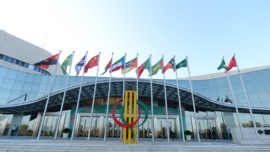With the transition, gaming exploded, in a city forced to make a reserve of MOP10 billion (almost a year of public expenses at the time), being in a continuous recession, with unemployment levels of 7 per cent.
The real estate bubble, created by Chinese capital in the 1990s, had been ‘encouraged’ by public hardships, brought on by a dreadful lack of public revenue.
It lasted until China closed the faucet a few years later.
And just woke up, after the liberalization of the game!
That made real estate explode by more than 16 times its real value.
No healthy economy can grow in such an artificial way, against its population and against common sense.
As it had happened in the 90s, with public hardships.
When in June 2014, China decided to close the tap, the real estate bubble shivered.
Today, at the end of 2016, the outlook for Macau’s economy is at a crossroads.
Many cities in the world would like to be in the same situation as Macau.
It was predictable that after so much exponential growth the market would be depleted in terms of human resources and the city strangled.
With the option now taken, and well, of intending to guide the game to the slope of the masses, it was necessary that as a precaution everything be prepared for that desired volume of visitors.
The infrastructure should have been designed in advance, the urbanism thought out and the solutions found before.
A necessary adventure but not for today that will end the quality of life of local citizens . . .
Everyone knew that the new bridge would knock on the door, that the light metro had to be completed prior to that, that parts of the city would have to be closed to traffic if the idea was to have mass quality and diversified tourism.
Attached to fear, to the problems that may arise from any decision, it was chosen not to confront them, leaving the city hostage to a runaway concept that will never make it more friendly to its residents, environment and visitors.
Solutions are shouted for more studies or for more public consultations.
The streets are sometimes dug up several times a year, creating problems never quantified from a cost benefit analysis for the quality of life of our population, and no alternatives and definitive solutions discussed.
But is it so hard to see a little bit more than the end of our nose?























